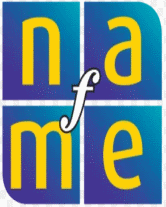Objectives
- Students will understand the evolving role of flute playing in Native American musical culture.
- Students will identify exemplary models of Native American flute playing.
- Students will develop criteria for assessing a performance on the Native American flute.
- Students will perform a representative Native American flute piece.
- Students will assess their own performance and that of other students.
Materials
- Suggested Books/Recording Sets
- Burton, J. Bryan. Moving within the Circle: Contemporary Native American Music andDance. Danbury, CT: World Music Press, 1993.
- Burton, J. Bryan, Chesley Goseyun Wilson, and Ruth Wilson. When the Earth Was LikeNew: Western Apache Stories and Songs. Danbury, CT: World Music Press, 1994.
- Suggested Books
- Ballard, Louis. American Indian Music for the Classroom, 2d ed. Santa Fe, NM: New Southwest Music.
- Chazanoff, Daniel. Music of the Native North American for Flute or Recorder. Brasstown, NC: Susato Press, 1990.
- Suggested Recordings
- Keepers of the Dream. Kevin Locke. Earthbeat 9-42573-2.
- Native American Flute Music. R. Carlos Nakai. Canyon Records CR 615-C.
- Songs of the Indian Flute, vol 2. John Rainer, Jr. Red Willow Songs.
- Young Eagle's Flight. Robert Tree Cody. Canyon Records CR 553.
Cultural Context
Flute playing among Native Americans has evolved from its earlier roles in courtship and healing to contemporary roles in entertainment. Skilled Native American flute players, such as R. Carlos Nakai, Robert Tree Cody, Kevin Locke, Chesley Goseyun Wilson, and John Rainer Jr., have earned loyal followings of fans in both Native American and Western culture and are considered exemplary models of Native American flute performance. Each has developed a unique style of performance based in part,= on traditions of tribal influences and preferences, and each is readily identifiable by such traits as tone, articulation, and improvisational style and skill. These master flutists have influenced and taught numerous students (both Native American and non-Native American) with the result that the Native American flute is fast becoming a familiar sound in motion picture and television scores, as well as popular music recordings (including rock and New Age music).
Procedures
- Make sure students have had prior experience in listening to and performing on the Native American flute or a substitute instrument.
- Play a Native American flute recording as students enter the classroom.
- Identify the changing role of flute playing in Native American culture.
- Identify and play examples of exemplary contemporary flute players.
- Help the class develop criteria for assessing performance on the Native American flute, such as tone, technique, ornamentation, and improvisation.
- Have students learn to play representative selections on Native American flute. Numerous transcriptions can be found in Moving within the Circle: Contemporary Native American Music and Dance and Music of the Native North American for the Flute or Recorder.
- Have students assess recorded performances by class members, following the criteria developed by the class, and make recommendations for improvements.
- Have students perform music again and determine if the performance has improved after following suggestions.
Indicators of Success
- Students are able to explain the evolving role of flute playing in Native American music.
- Students are able to identify exemplary models of Native American flute performance.
- Students are able to develop criteria for assessment of performance based upon these models.
- Students are able to perform a representative flute piece.
- Students are able to assess their own performance.
Extension
After learning a representative piece for Native American flute, have each student create a personal version with variations and ornamentation. Have students compare their performance to a performance by an exemplary model.
Standards Correlation
Standard 7b
: Evaluating music and music performances
Excerpted from Making Connections: Multicultural Music and the National Standards.

| Provided in partnership with NAfME |





